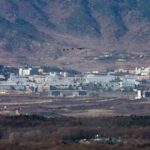① Death Due to Heat Shock Symptoms

Many tourists head to Japan to enjoy hot spring trips as winter arrives. Japan, with abundant volcanic activity, boasts thousands of hot springs nationwide. Hot springs are classified into 10 categories in Japan based on their mineral content. Each region offers a variety of hot springs with different mineral compositions, adding an element of choice to your visit.
Japanese hot spring trips are undeniably most popular in winter. People often research various destinations to plan their hot spring trips. There seems to be nothing better than soaking in a warm, hot spring and relaxing amidst the cold weather.
However, when enjoying Japanese hot springs in winter, a necessary precaution is to beware of heat shock. Last February, three elderly Koreans died in Japanese hot springs. The accidents occurred in hot springs in places like Beppu in Kyushu and Sapporo in Hokkaido, and the cause was determined to be heat shock.

Heat shock refers to abnormal signs in the body when blood pressure fluctuates rapidly due to a sudden change in body temperature. This sudden rise in blood pressure can lead to strokes or heart attacks. It often occurs suddenly from a cold outdoor space, like an open-air bath, to a warm indoor space. This can also lead to hypotensive shock, where our organs and nerves lose function.
Particularly for the elderly and those with underlying vascular diseases, the act of bathing in an open-air bath during the cold winter can be fatal. Inside the hot spring, falls or drowning accidents can occur due to symptoms of heat shock. In severe cases, heat shock can even lead to death.
In Japan, hot springs and daily life often involve bathing in a tub so that heat shock symptoms can occur at home. As most Japanese houses are wooden, the inside tends to be cold. This is another reason for the significant temperature difference during bathing.
② Frequently Occurring in Winter

As Korean tourists’ visits to Japan increase, the risks of heat shock are continually being highlighted. In Japan, where hot spring culture is well-developed, accidents due to heat shock frequently occur every year from November to February.
Last year, deaths due to heat shock in Japan exceeded 20,000. Every year, between 17,000 and 20,000 emergency calls are made due to symptoms of heat shock. In Japan, there are even research results that the number of deaths due to heat shock is three times the number of traffic accident deaths. 90% of the deceased are older people over 65 years old.
Patients with high blood pressure, diabetes, obesity, arrhythmia, sleep apnea syndrome, etc., are more prone to heat shock. It is important to follow safety rules to prevent sudden changes in blood pressure and body temperature to prevent heat shock.

Before bathing, it’s good to do light stretching and shower with warm water to raise your body temperature. It’s also important to stay hydrated. Avoid bathing immediately after eating or drinking, as it increases the risk of heat shock.
If the bath water temperature is above 42°C (107.6°F), it can strain the heart. A temperature of 38-40°C (100.4-104°F) is suitable. It’s recommended to bathe for about 10-15 minutes per session twice a day. When bathing, it’s best to immerse your body up to the chest, not completely. After bathing, you should quickly dry your body with a towel to prevent a drop in body temperature.
Older people and those with cardiovascular diseases need to be more cautious, and it’s better to bathe with companions to prepare for any unforeseen circumstances. If you suddenly stand up when getting out of the bath, it can disrupt blood flow to the brain. This can cause dizziness or fainting, so standing up slowly is essential.
③ Precautions for Japanese Hot Spring Trips

In addition to heat shock, there are a few things to be aware of before heading on a Japanese hot spring trip. You must wash your body before entering the hot spring. Typically, you should enter the hot spring naked. You shouldn’t immerse your head in the hot spring water, and you shouldn’t put towels in the bath or wrap them around your body.
Some hot springs in Japan do not allow people with tattoos to enter. You can see signs prohibiting bathing if you have tattoos at famous tourist spots in Japan. However, there are hot springs that allow entry even if you have tattoos, so it’s recommended to check in advance before visiting. If you use a private hot spring, you can enjoy the hot spring without any hesitation, even if you have tattoos.
However, if you have small tattoos, you can cover them with band-aids or the like and visit. In Japan, hot springs are a tourist product. Some suggest abolishing the tattoo ban rule to promote Japanese hot springs to foreign tourists.
By. Han Mia















Most Commented